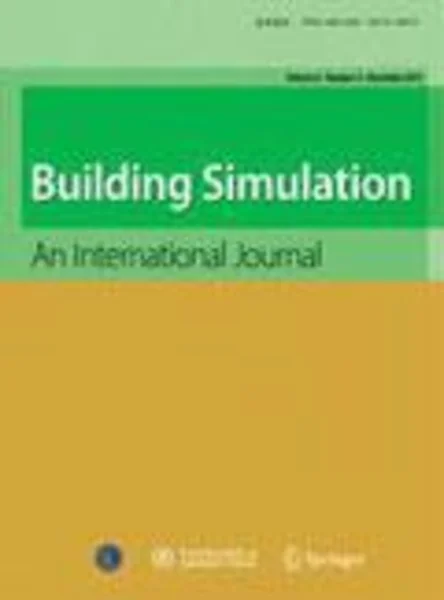-
role of air changes per hour (ach) in possible transmission of airborne infections
جزئیات بیشتر مقاله- تاریخ ارائه: 1392/07/24
- تاریخ انتشار در تی پی بین: 1392/07/24
- تعداد بازدید: 844
- تعداد پرسش و پاسخ ها: 0
- شماره تماس دبیرخانه رویداد: -
the cost of nosocomial infections in the united states is estimated to be $4 billion to $5 billion annually. applying a scientifically based analysis to disease transmission and performing a site specific risk analysis to determine the design of the ventilation system can provide real and long term cost savings. using a scientific approach and convincing data, this paper hypothetically illustrates how a ventilation system design can be optimized to potentially reduce infection risk to occupants in an isolation room based on a thorough risk assessment without necessarily increasing ventilation airflow rate. a computational fluid dynamics (cfd) analysis was performed to examine the transport mechanism, particle path and a suggested control strategy for reducing airborne infectious disease agents. most studies on the transmission of infectious disease particles have concentrated primarily on air changes per hour (ach) and how ach provides a dilution factor for possible infectious agents. although increasing ventilation airflow rate does dilute concentrations better when the contaminant source is constant, it does not increase ventilation effectiveness. furthermore, an extensive literature review indicates that not every exposure to an infectious agent will necessarily cause a recipient infection. the results of this study suggest a hypothesis that in an enclosed and mechanically ventilated room (e.g., an isolation room), the dominant factor that affects the transmission and control of contaminants is the path between the contaminant source and exhaust. contaminants are better controlled when this path is uninterrupted by an air stream. this study illustrates that the ventilation system design, i.e., when it conforms with the hypothesized path principle, may be a more important factor than flow rate (i.e., ach). a secondary factor includes the distance from the contaminant source. this study provides evidence and supports previous studies that moving away from the patient generally reduces the infection risk in a transient (coughing) situation, although the effect is more pronounced under higher flow rate. it is noted that future research is needed to determine the exact mode of transmission for most recently identified organisms.
مقالات جدیدترین رویدادها
-
استفاده از تحلیل اهمیت-عملکرد در ارائه الگوی مدیریت خلاقیت سازمانی و ارائه راهکار جهت بهبود
-
بررسی تاثیر ارزش وجوه نقد مازاد بر ساختار سرمایه شرکت های پذیرفته شده در بورس اوراق بهادار تهران
-
بررسی تأثیر سطح افشای ریسک بر قرارداد بدهی شرکت های پذیرفته شده در بورس اوراق بهادار تهران
-
بررسی تأثیر رتبه بندی اعتباری مبتنی بر مدل امتیاز بازار نوظهور بر نقد شوندگی سهام با تأکید بر خصوصی سازی شرکت ها
-
تأثیر آمیخته بازاریابی پوشاک ایرانی بر تصویر ذهنی مشتری پوشاک ایرانی (هاکوپیان)
-
نگرشی بر چگونگی خلاقیت کودک با رویکرد بیومیمیتکس
-
بررسی تأثیر دعا بر بینش نیایشگر از نظر شیعه و کاتولیک
-
نانو مواد و ساختمان سازی های هوشمند
-
تنش برشی متوسط کف و دیواره ها در جداره ی صاف کانال ذوزنقه ای با بهترین مقطع هیدرولیکی با استفاده از نگاشت همدیسی
-
optimization of critical factors to enhance polyhydroxyalkanoates (pha) synthesis by mixed culture using taguchi design of experimental methodology
مقالات جدیدترین ژورنال ها
-
مدیریت و بررسی افسردگی دانش آموزان دختر مقطع متوسطه دوم در دروان کرونا در شهرستان دزفول
-
مدیریت و بررسی خرد سیاسی در اندیشه ی فردوسی در ادب ایران
-
واکاوی و مدیریت توصیفی قلمدان(جاکلیدی)ضریح در موزه آستان قدس رضوی
-
بررسی تاثیر خلاقیت، دانش و انگیزه کارکنان بر پیشنهادات نوآورانه کارکنان ( مورد مطالعه: هتل های 3 و 4 ستاره استان کرمان)
-
بررسی تاثیر کیفیت سیستم های اطلاعاتی بر تصمیم گیری موفق در شرکتهای تولیدی استان اصفهان (مورد مطالعه: مدیران شرکتهای تولیدی استان اصفهان)
-
آسیب شناسی کیفرگذاری موجود در جرایم خانوادگی موضوع کتاب پنجم قانون مجازات اسلامی ( تعزیرات ) مصوب 1375 ؛ از تبیین آسیب ها تا ارائه راهکارها
-
مطالعه تحلیلی نقش مایه های دارایی بافی یزد از منظر نشانه شناسی
-
بررسی عوامل تاثیر گذار بر تمایل به ادامه کسب و کار اینترنتی در بنگاه های کوچک و متوسط استان تهران
-
آراء بلاغی فخر رازی در جزء اول قران کریم
-
studies on some mechanical properties of pvc-wood fibre composite




سوال خود را در مورد این مقاله مطرح نمایید :